

Josh Nevett
CarExpert's top five large SUV reviews of 2025
2 Days Ago
As an affordable luxury SUV with room for up to eight, the 2023 Palisade has hit the ball out of the park – no question.
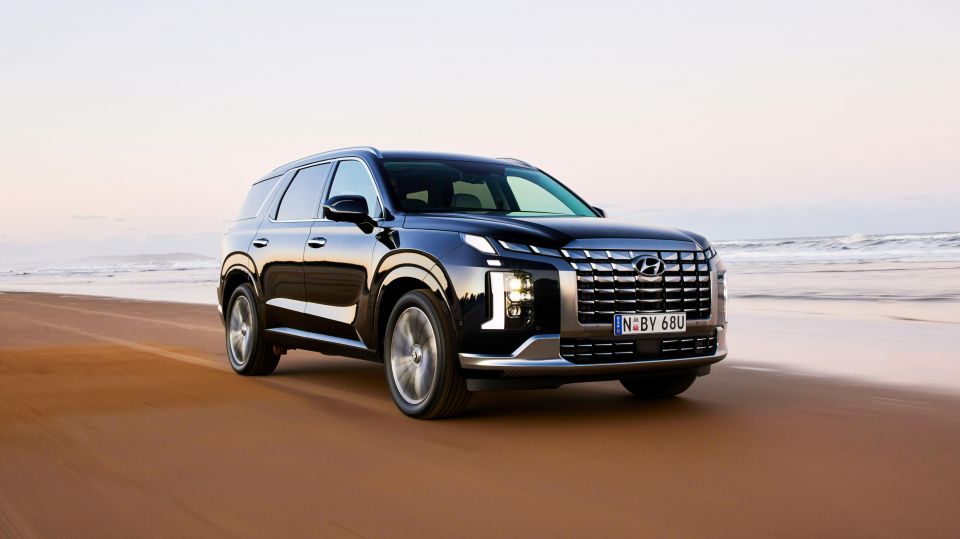


Quickly see how this car stacks up against its competition. Select any benchmark to see more details.
Where expert car reviews meet expert car buying – CarExpert gives you trusted advice, personalised service and real savings on your next new car.
There’s something oddly addictive about large SUVs with lots of space and tonnes of tech, and it doesn’t come much better than the 2023 Hyundai Palisade.
For those unfamiliar with the Palisade, it’s one of those American-style Black Ops vehicles (especially in Abyss Black mica) with genuine people-mover capacity and all the bells and whistles you could ever want in your family hauler, and then some.
It launched globally in markets like the US and South Korean in 2018, but it would be late-2020 before the Palisade landed in Australian showrooms amidst the grip of the COVID-19 pandemic, and yet more than 6000 of these big Korean SUVs have found Aussie homes.
So, after what feels like only yesterday when it first dropped, the Palisade has already received its first comprehensive update, which includes a brasher look all over, and pretty much more of everything – including 15mm more length, an improved five-star ANCAP safety rating (up from four stars) and a steeper asking price.

Along with the facelift also comes less choice with your new Palisade, by design apparently. After sifting through sales for the 2022 model year, Hyundai tells us the overwhelming majority of buyers (70 per cent) go for the range-topping Highlander model variant, while 24 per cent choose the mid-spec Elite trim. Just 6.0 per cent opted for the base model.
As a result, for 2023 the Palisade is offered in just two trims (Elite and Highlander), thereby ditching the outgoing entry-level variant altogether.
However, there’s a still a choice of petrol or diesel regardless of which trim you choose, just bear in mind petrol versions are offered with front-wheel drive exclusively, while the diesel is only mated to all-wheel drive.
As a sign of the times, there’s now a clearer delineation between the two trims, both inside and out, starting with two different finishes for Palisade’s even larger, more imposing face, as well as more contemporary lighting designs to compliment the new look.
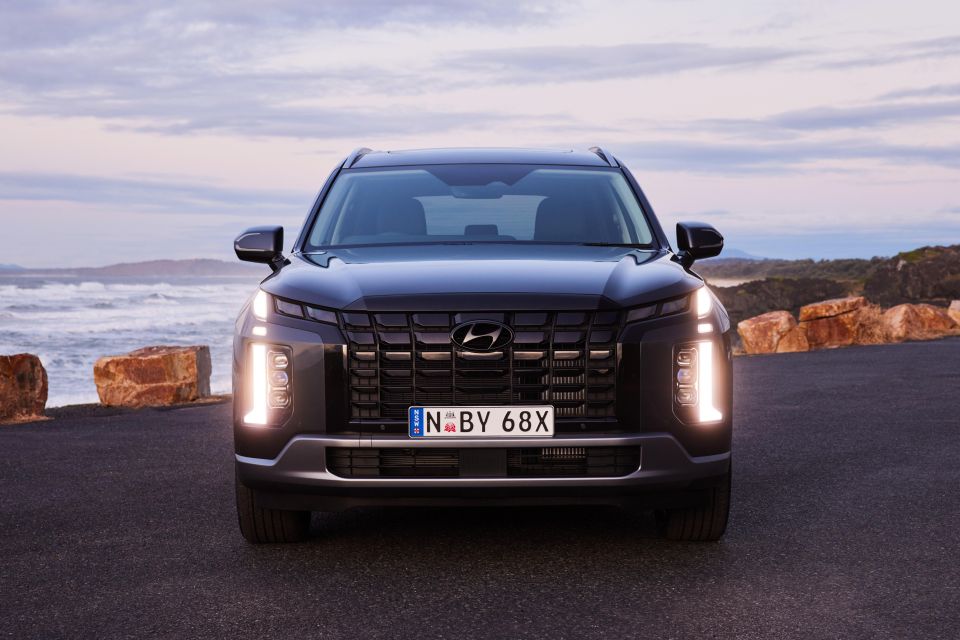
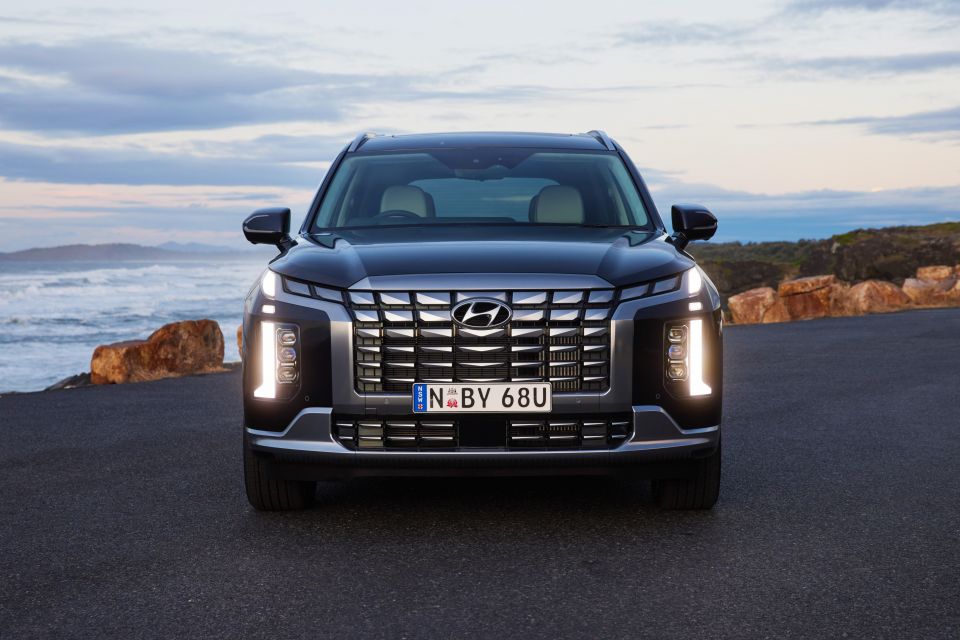
There are some SUVs with similarly-large cliff-edge grilles which just look silly, but both Highlander’s premium-look Satin Chrome finish and Elite’s Dark Chrome finishes really do work well, aesthetically.
Hidden turn signals also compliment Palisade’s new so-called Parametric Shield front grille perfectly, along with a wider, full-width alloy-look skid plate that gives the illusion it’s got a wider stance, despite all other dimensions (except length) remaining the same as the previous iteration.
Both the headlights and daytime running lights have been modernised for the better, with vertical clusters on both counts. We like this a lot for the more contemporary, technical look it gives the Palisade. It looks positively flash without going overboard or looking kitsch.
Out back, changes are less noticeable. The lower rear bumper has been re-styled by adding a matching full-width skid plate, full-width reflector light, vertical LED reversing lights that match the DRLs up front and square-shaped exhaust tips rounding off the new look.
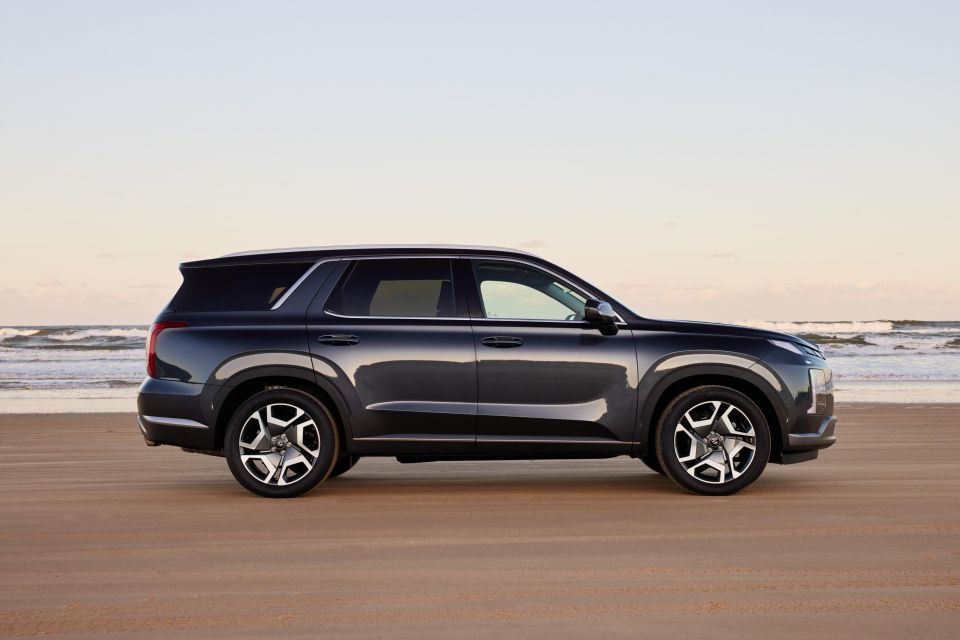
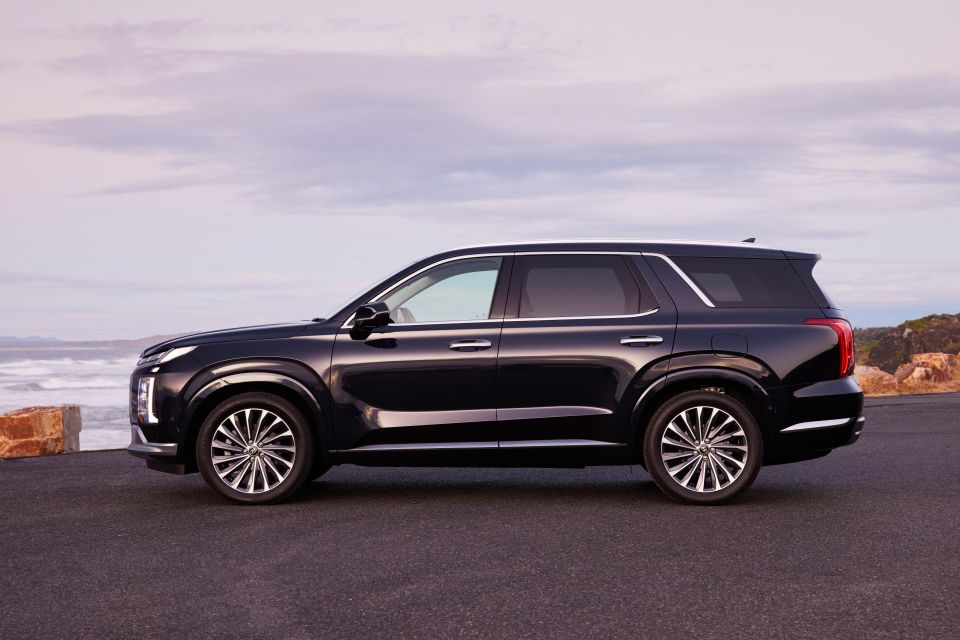
There are new wheel designs too – the Highlander getting 20-inch turbine machined alloys and tasty satin chrome door handles, while the Elite is equipped with the same size wheels but a different design and body-coloured door handles. Both styles are a good match for the American-inspired Palisade design.
Styling is one thing, but this isn’t just a skin-deep makeover. For example, the chassis has been reinforced for increased body rigidity. Additionally, the side sill, floor and B-pillar have also been reinforced for better crashworthiness.
Beyond that, there’s a noticeable improvement in ride comfort (more on that later) thanks to the introduction of third-generation Selective Damping Control that adjusts the oil flow rate in the dampers based on input frequency. The results are simply remarkable for what is effectively a passive suspension system.
Interestingly, the steering rack gets revised bearings for greater feel on-centre at speed, as well as new rubber mountings for the rear differential designed to reduce driveline vibration.
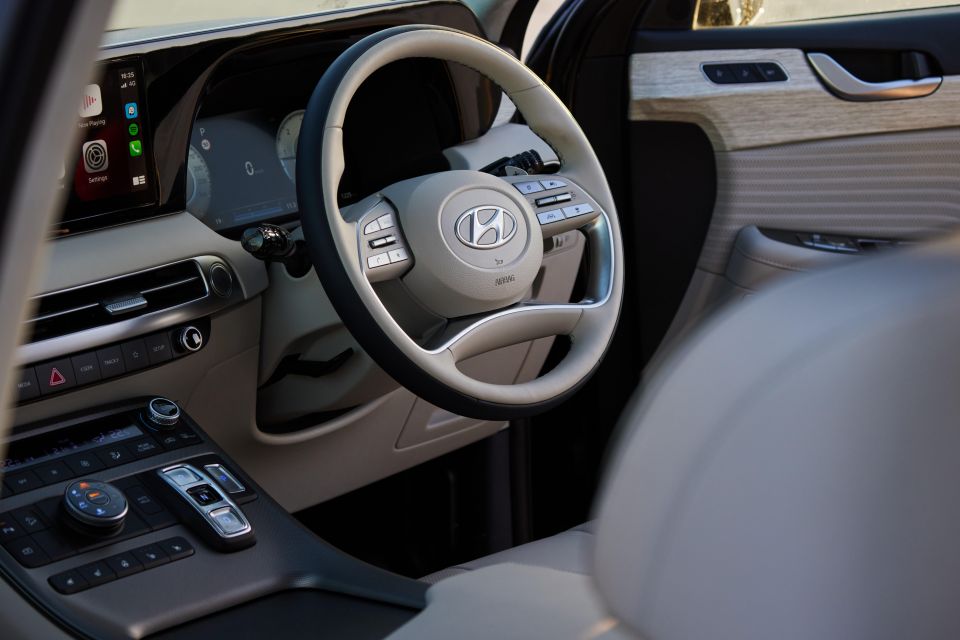
Even the eight-speed transmission has been tweaked for smoother, more intuitive shifting thanks to a suite of gearbox enhancements including a revised shift-by-wire actuator, low-friction seals and the use of a lower-viscosity oil.
Lastly, the Palisade benefits from increased levels of refinement through more extensive insulation measures including greater use of noise-reduction materials in key areas such as the rear wheel arches, luggage trim and bumpers.
Even the rear door glass is now 9.0 per cent thicker, while wind noise has been reduced in several problematic areas including side mirrors and door glass seals.
Inside, Palisade’s cabin might appear largely unchanged on first glance, but on closer inspection we counted 16 new features including dual 12.3-inch screens, remote start function and a digital rear-view mirror.
Dig deeper and you’ll find another seven previously existing features have received significant upgrades including ventilated rear seats for eight-seat versions and more powerful (15W) wireless phone charger to name a couple.

Buyers of the 2023 Hyundai Palisade will also cop a hefty price rise of between $3700 and $4200 depending on which model variant they choose.
2023 Hyundai Palisade pricing:
Prices exclude on-road costs
The pricing adjustments mean the Palisade Elite competes with high-spec versions of smaller models like the Hyundai Santa Fe and Kia Sorento, while high-spec models line up against flagship versions of the Mazda CX-9 and Toyota Kluger, and is knocking on the door of more premium metal like the Volkswagen Touareg and Volvo XC90.

Buy your new car without the stress. It's fast, simple and completely free.

Great service from Travis and team, second time I have used this business would not hesitate to recommend them to anyone
Craig C.
Purchased a Ford Ranger in Sunshine Coast, QLD
CarExpert helped Craig save thousands on his Ford Ranger, now let us save you on your next new car.
Find a dealSales data shows that 60 per cent of Palisade buyers choose the eight-seat option over the seven-seat version, which means while gaining an extra seat, you also lose the two captain’s chairs in the second row – something to consider.
While it’s easy to see why the vast majority of Palisade buyers go for the more luxurious Highlander spec, you can rest assured the entry-level Elite version still looks and feels satisfyingly special with its all-leather upholstery, complete with quilting on the seatbacks contrast pipping on the edges.
Despite the enormous array of features and creature comforts on board the latest Palisade, the cabin itself is a wonderfully clean and uncluttered design that looks to take a leaf out of the very latest BMW cockpits (good thing) with special reference to the array of horizontal lines including the full-width air-con vents.
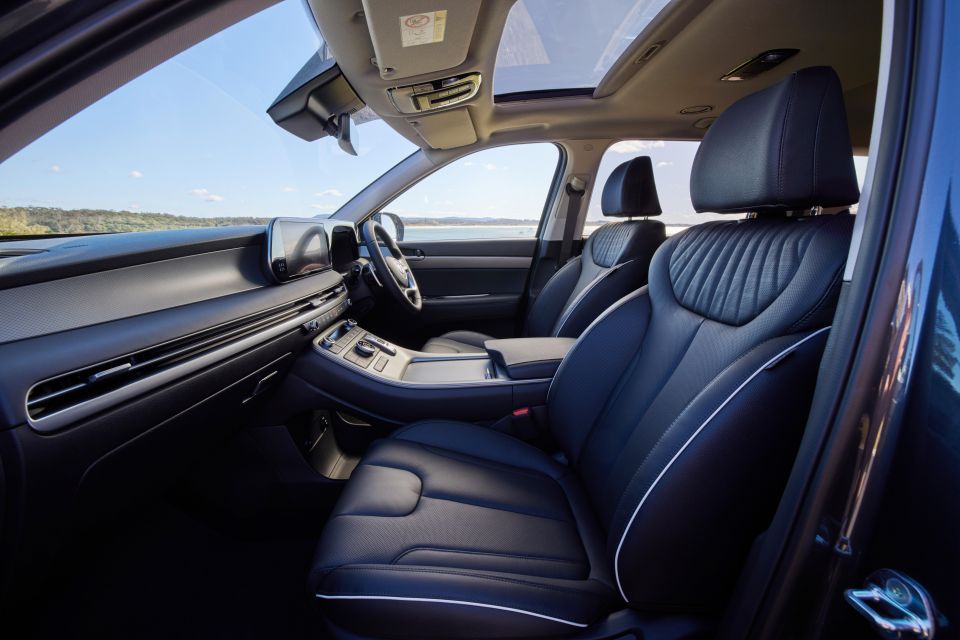
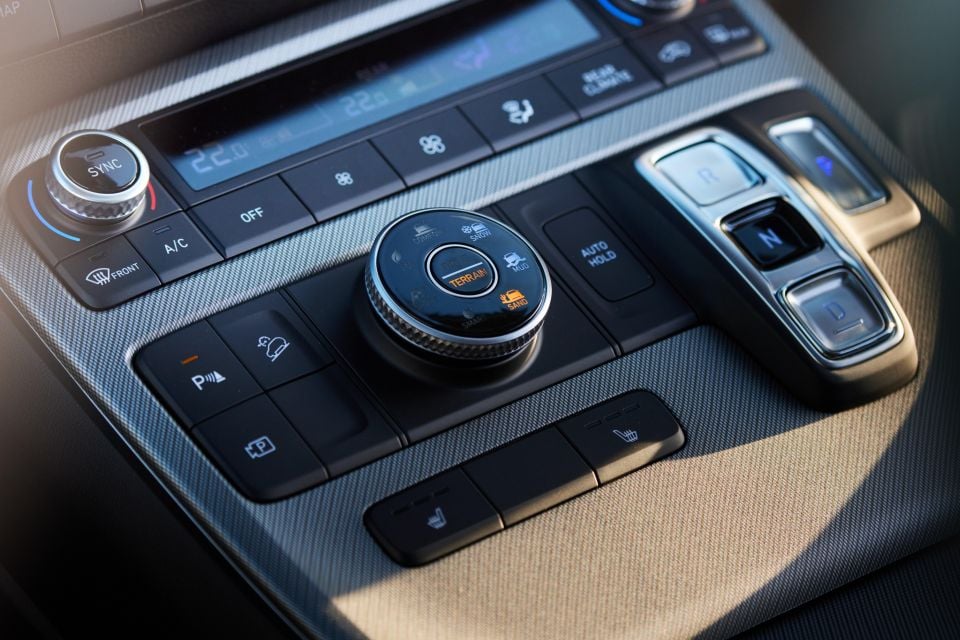
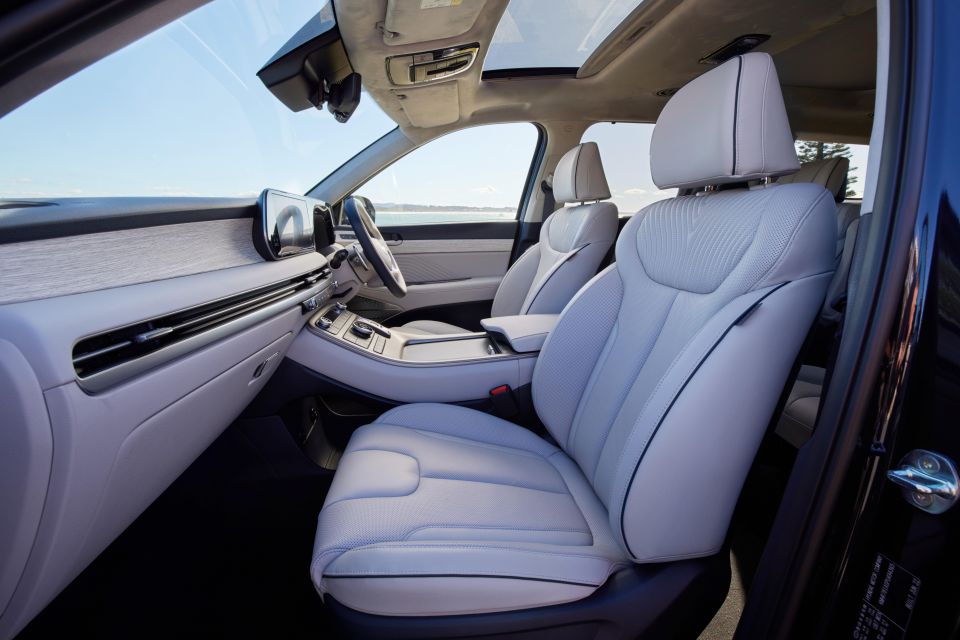
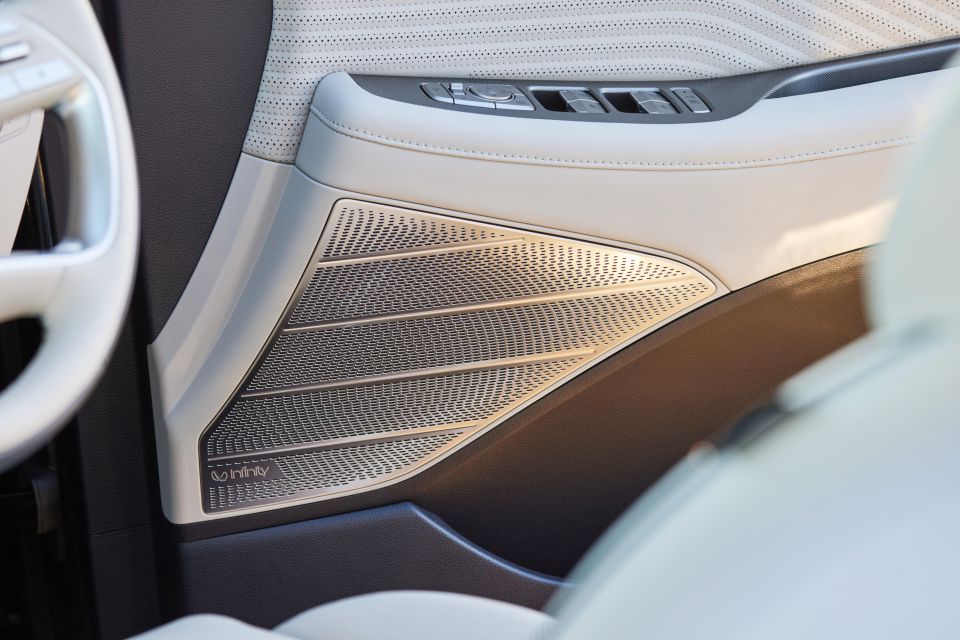
We especially like the look and feel of the suede headliner on the Highlander, whereas the Elite gets a fabric version. There’s also some leather trim on the lower dash, as well as what looks and feels like open-pore timber below.
Even the door cards get splashes of quilted leather; alloy-look trim and that open-pore wood-look material. It’s a combination of various materials that work well together – it looks almost Nordic.
There’s a fresh, new-look steering wheel with a bit of an odd four-spoke design, but it feels great to the touch and the buttons are nice and large for easy access to the usual functionality.
Sadly, there’s still no electric adjustment for the steering wheel, even on the Highlander. Given the level of luxury on offer here, it almost feels wrong to have to manually adjust the reach and tilt. How about it Hyundai?
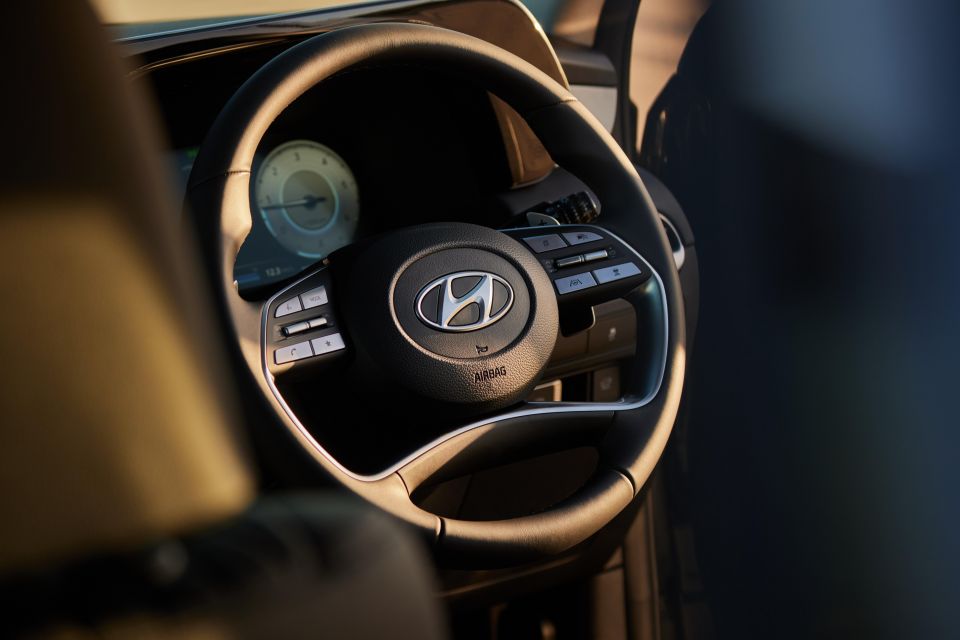
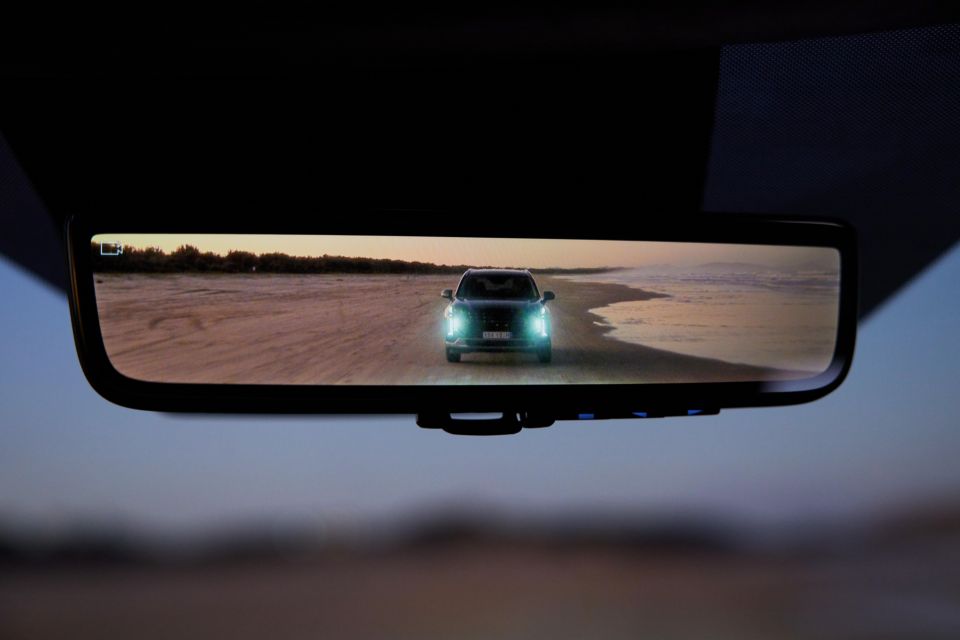

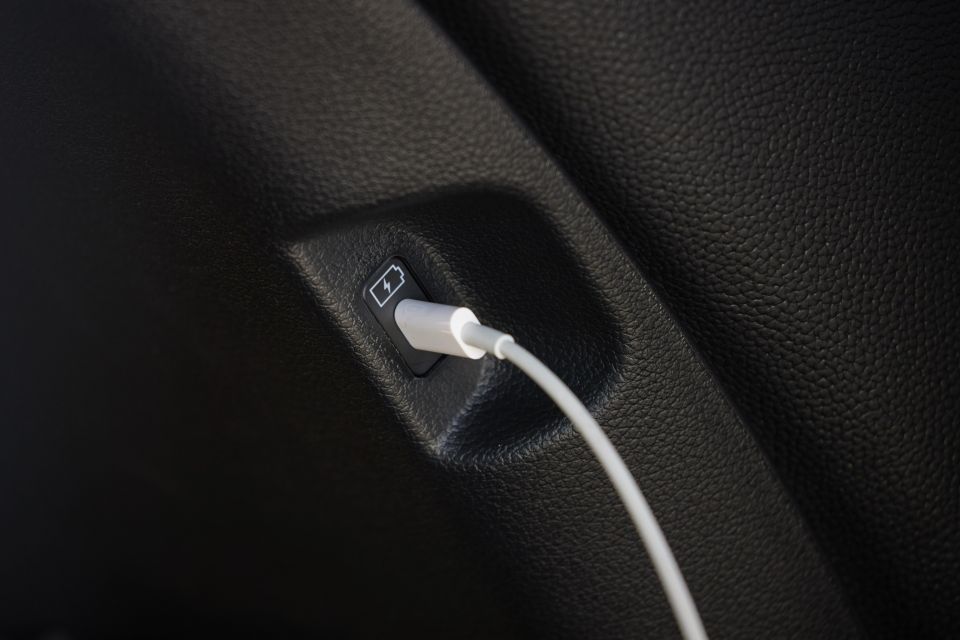
Ergonomically, though, the Palisade is excellent with the centre console encapsulating the push-button shift-by-wire drive selector and rotary drive mode dial, along with HVAC and seat heating/ventilation controls.
The new, larger 12.3-inch dual screens are another good fit for this updated Palisade, especially the digital driver’s display (upgraded from analogue) which can be configured in several ways depending on what information the driver wants displayed.
While the entry-level Elite gets a frameless auto-dimming rear-vision mirror, the Highlander is equipped with a more advanced camera-based digital version (a first for Hyundai), which provides the option of a wide unencumbered view (if all the seats are occupied, for example) or a standard mirror view.
The front seats in either trim deserve special mention for both the comfort and support they afford, especially if you’re going to be sitting behind the wheel for several hours or more. And, while the leather is softer in the Highlander, those in the Elite are exactly the same design and still wonderfully supple.
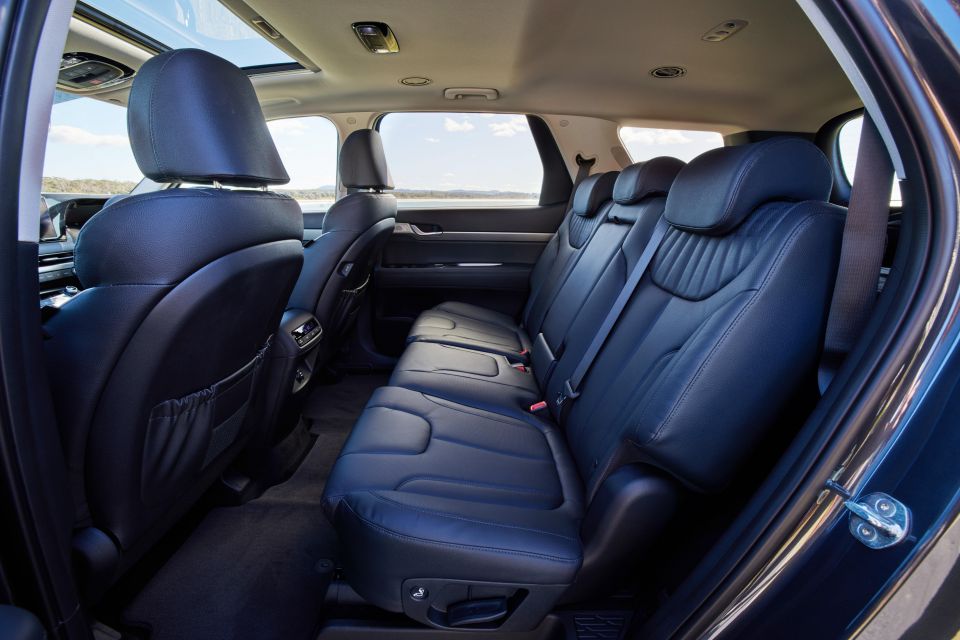
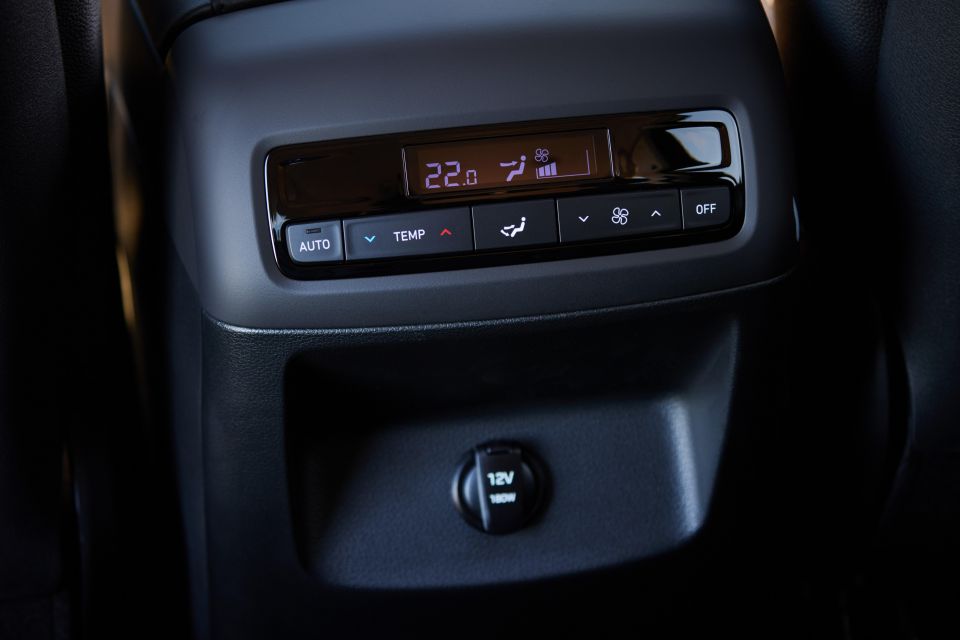
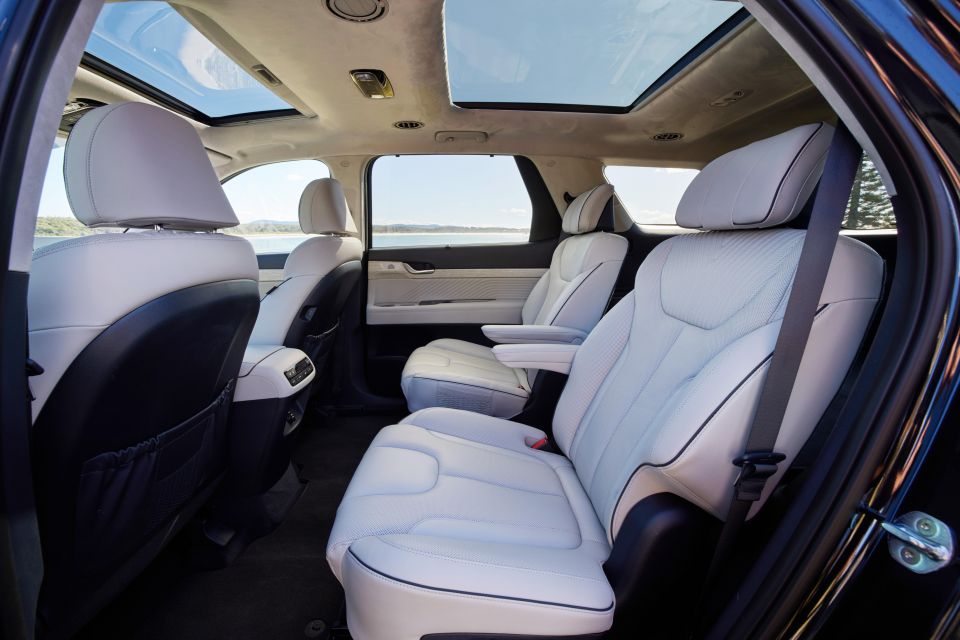
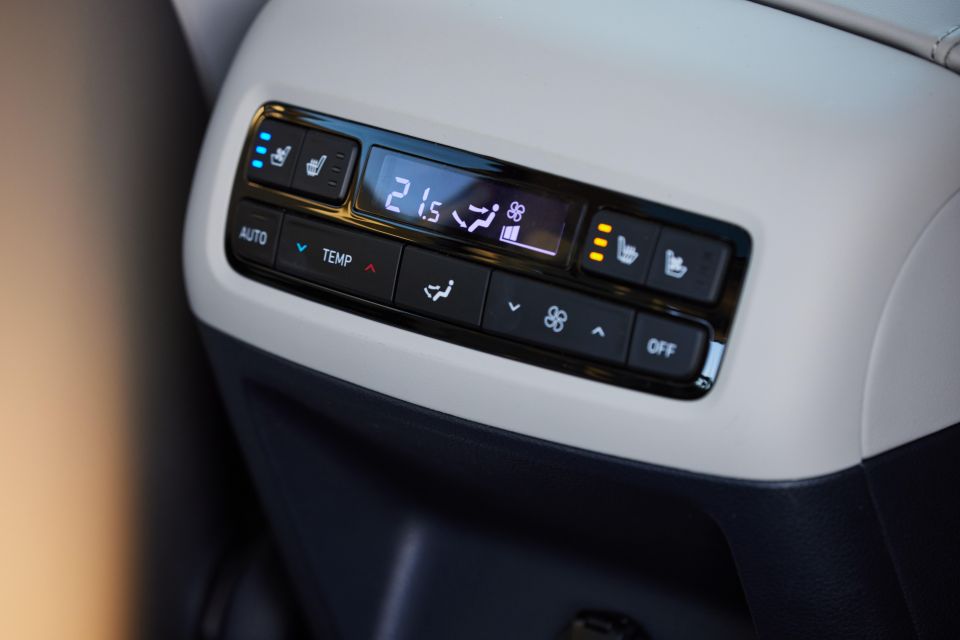
Stretching nearly five-metres in length, the Palisade understandably offers stacks of space throughout the entire cabin.
We only sampled the eight-seat version of both Elite and Highlander trims, which gets two full-width bench seat configurations behind the front row, rather than the two captain’s chairs in the centre row of the seven seater.
There’s still a stack of rear legroom available for passengers sitting in the second row, thanks to both sliding seats and a completely flat floor.
Accessing third-row seating is surprisingly easy, via a button on each of the two outer seats which automatically folds and slides them forward in one cohesive movement.

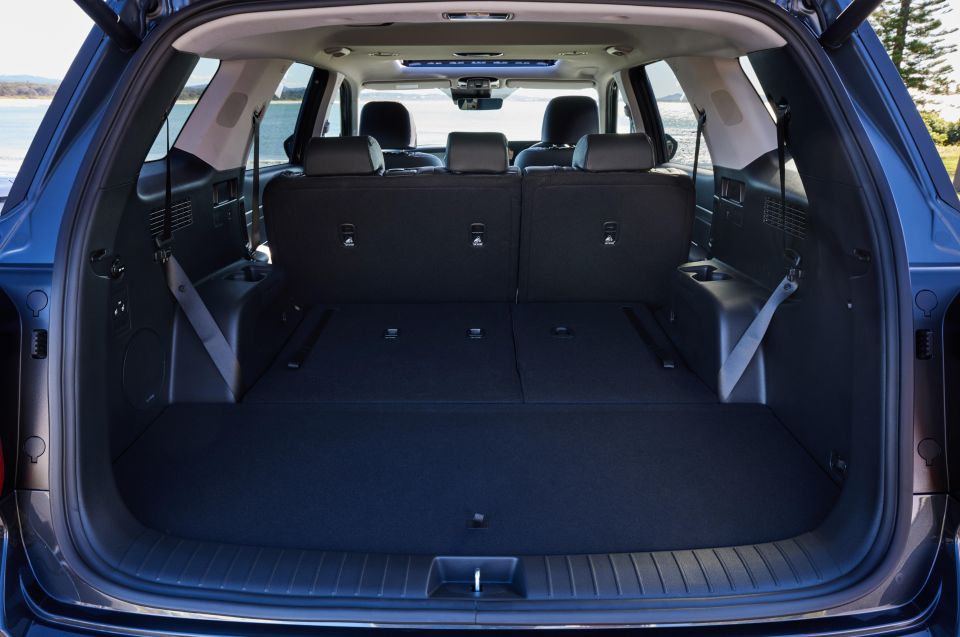
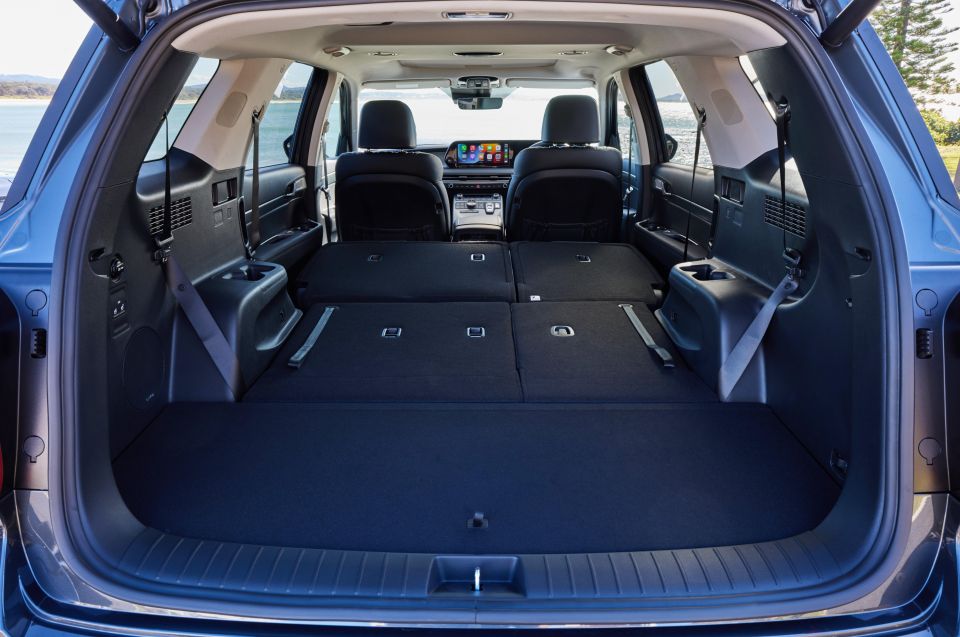
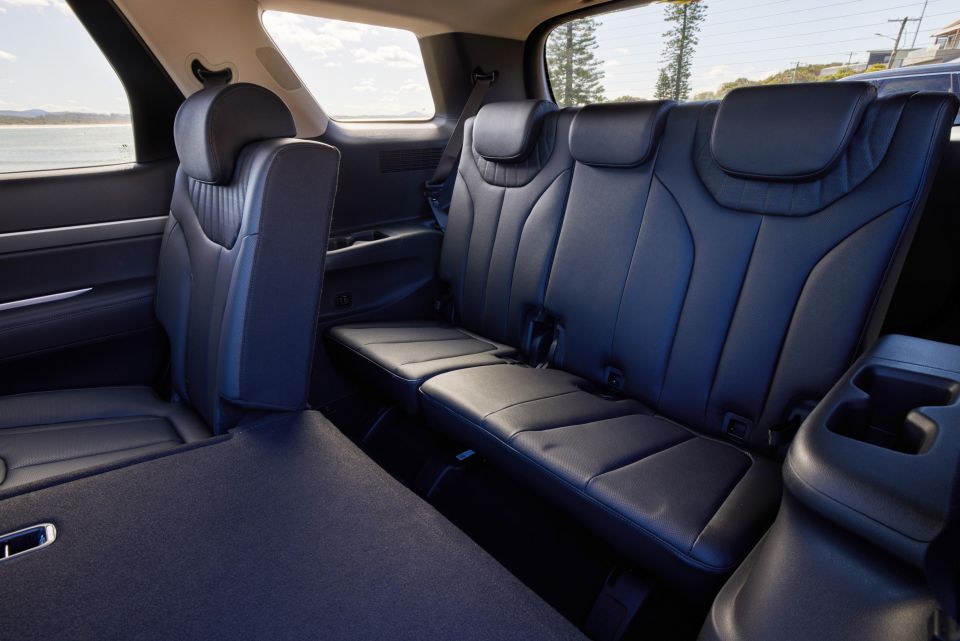
Plenty of the usual amenities back there, too, with six cupholders in the middle row along with digital climate controls, while third-row seating gets four cupholders and roof-mounted vents.
Both rear-seat rows fold virtually dead flat, transforming the Palisade into a veritable station wagon capable of swallowing extensive loads and luggage.
There’s 311 litres of space behind the third row and 704 litres are liberated when folded, for example. With all rear seats collapsed, luggage space expands to 2447 litres SAE (U.S. standard).
There’s a convenient under-floor compartment behind the rear-most seat row that stores one very solid luggage blind and the jack.
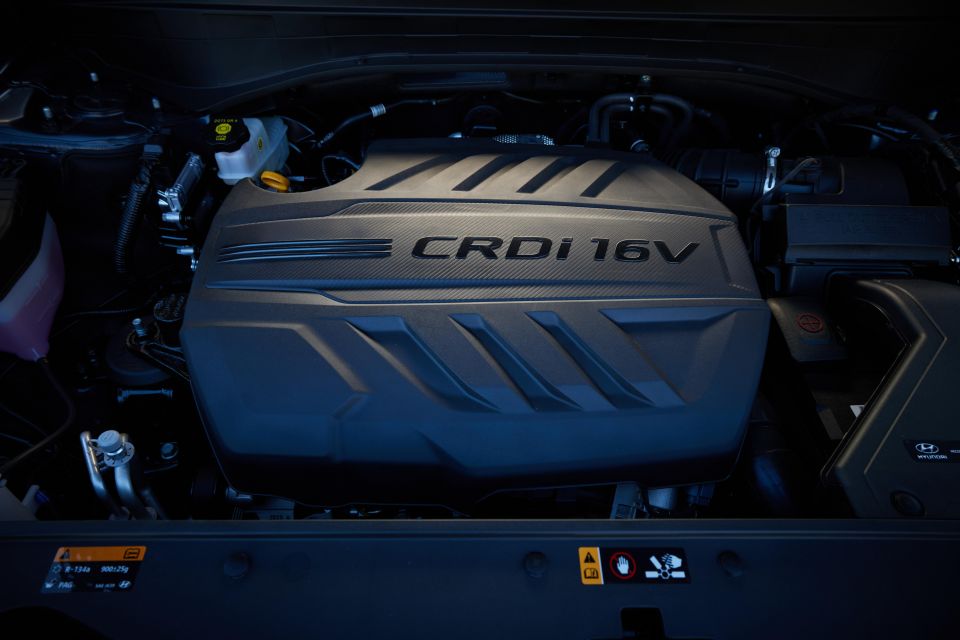
As before, the 2023 Hyundai Palisade is available with two powertrains.
The petrol option is a naturally-aspirated 3.8-litre V6 producing 217kW of power and 355Nm of torque. It’s available only with front-wheel drive.
The second and by far the most popular option is a 2.2-litre four-cylinder turbo-diesel producing 147kW and 440Nm. It’s available only with all-wheel drive.
Both engines are paired with an eight-speed automatic transmission developed in-house by Hyundai.
The V6 petrol version is understandably the least efficient of the two powertrains and uses 10.7L/100km on the combined cycle, while the turbo-diesel four gets 7.3L/100km. In fact, on the run back from Bowral to Sydney we recorded an average of 5.9L/100km.
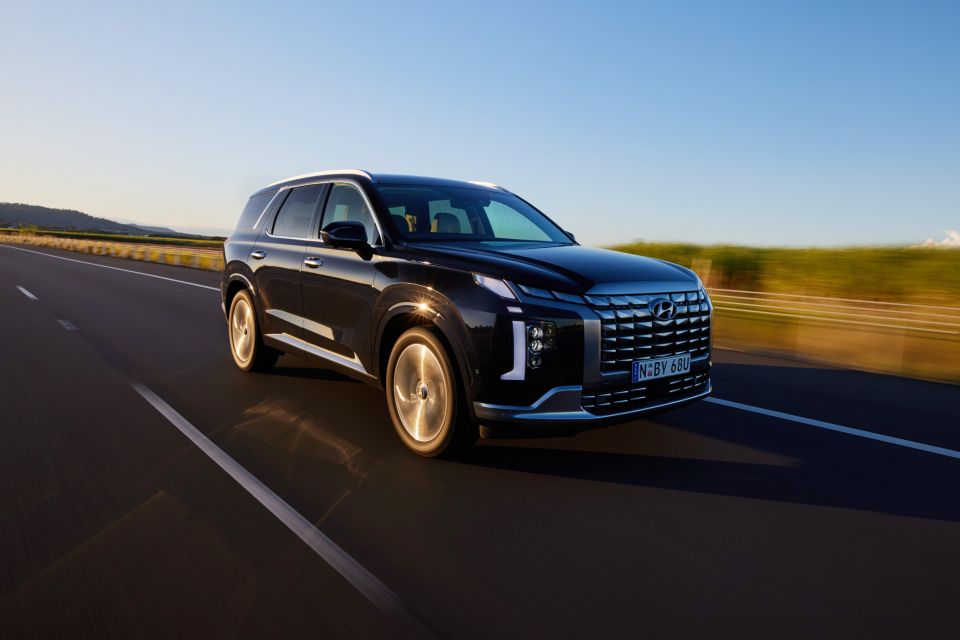
For the record, 80 per cent of Palisade buyers in Australia have bought the diesel over the petrol version, given its better fuel economy and all-wheel drive.
Subsequently, we only got to drive the Palisade diesel at launch in both Elite and Highlander trims.
If anyone is concerned about the Palisade’s 2.2-litre four-cylinder diesel’s ability to haul a vehicle of this size and heft, we can put those fears to rest here and now.
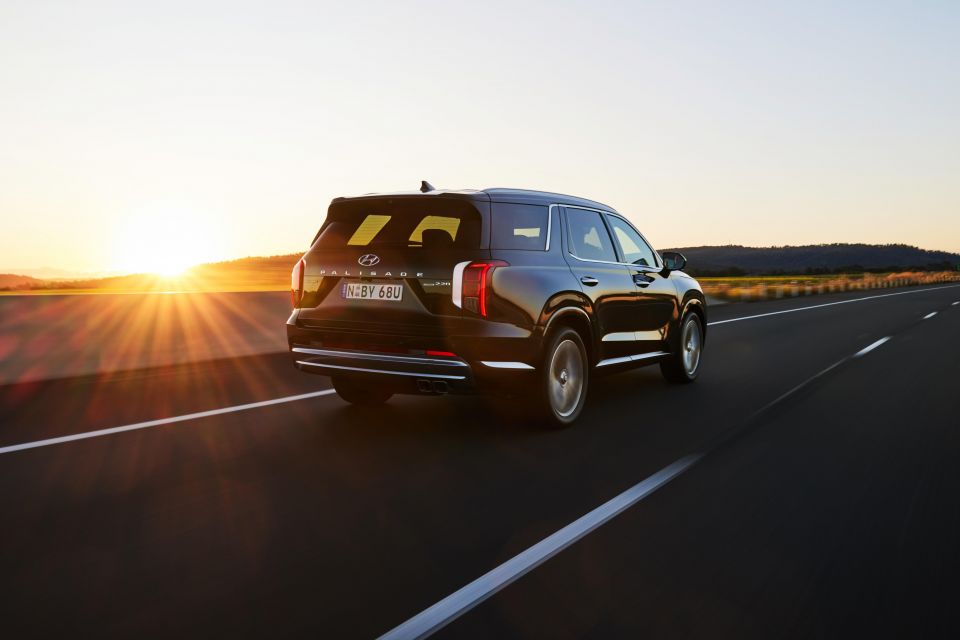
Where expert car reviews meet expert car buying – CarExpert gives you trusted advice, personalised service and real savings on your next new car.
Peak power comes at 3800rpm and all 440Nm of torque is available from just 1750rpm to 2750rpm, so there’s plenty of punch from the get-go and very little lag to contend with if you need to give it a boot full.
And, it doesn’t stop there. Throttle response from pretty much anywhere in the rev range is immediate and convincing, whether you powering along a fast-flowing country B-road or pulling out of a suburban junction.
Not only is it impressive performance from the small-displacement diesel, it’s also outstandingly quiet and refined. In fact, I can’t recall driving a sub-3.0-litre diesel (car or SUV) that delivers such a high level of refinement – even under load.
Hyundai has employed a whole suite of engineering and acoustic solutions designed to isolate engine noise, wind noise and any associated vibrations throughout the drivetrain from the Palisade’s cabin. It’s a holistic approach that’s proven to be very effective.
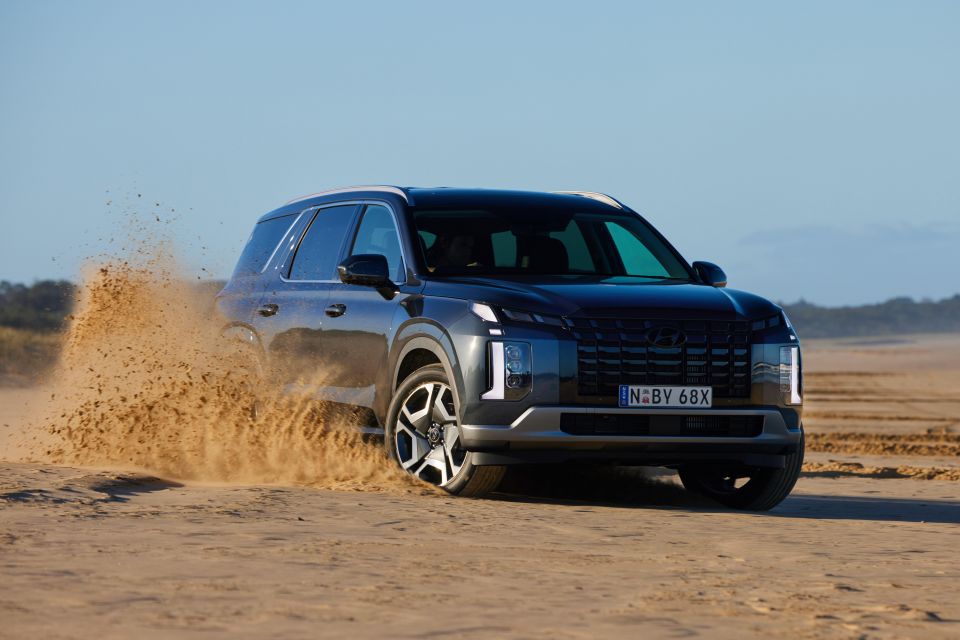
There’s more steering feel too, likely the result of revised bearings that helps deliver excellent on-centre feel and more direct steering feel, especially at speed.
When it comes to the Palisade’s ride and handling, the refinement story gets even better, regardless of whether you’re driving on or off the beaten track. It’s remarkable given neither variant benefits from adaptive dampers.
Instead, Palisade is the first such Hyundai to be equipped with third-generation Selective Damping Control technology (SDC3), which effectively adds an additional piston valve in the damper which can adjust the oil flow rate based on the frequency of the damper movements. In addition, the springs have also been revised for 2023.
Ride comfort over some quite shocking country roads is the kind of compliance and body control that betters many full-blown adaptive suspension solutions from rival makes and models.
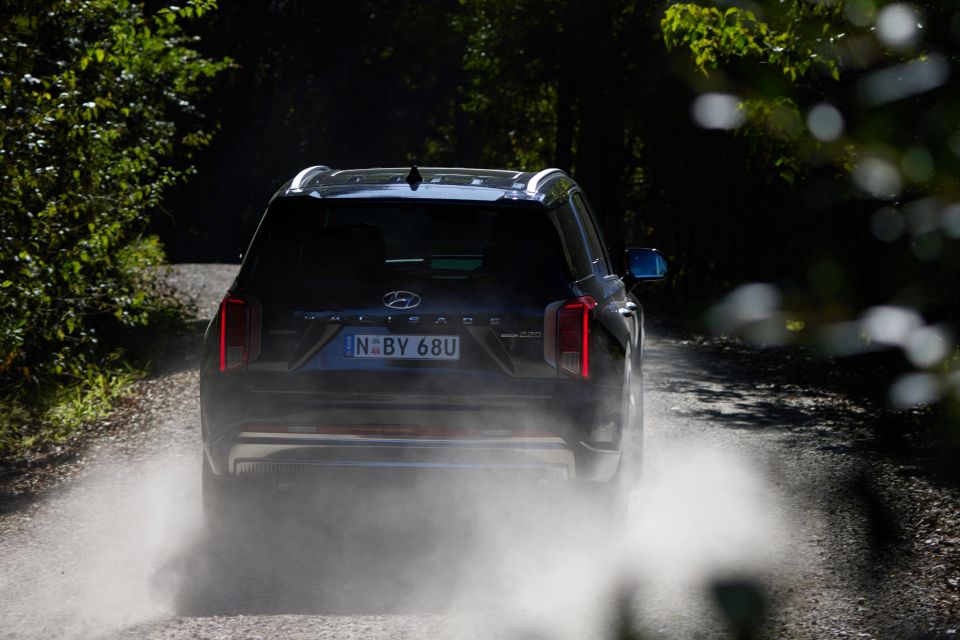
It wasn’t just bumps and broken road we tested the Palisade on either, we took it through proper deep troughs at speeds of 70km/h-plus with barely a ripple felt through the chassis and in the cabin (watch the video at the bottom).
At the same time body control has been demonstrably improved thanks to various strengthening measures which have added more rigidity to Palisade’s body. There’s little if anything that seems to upset the vehicle or induce any unwanted roll through the bends.
In the end it’s not any one thing that stands out with the latest Palisade, rather, lots of smaller enhancements in key areas, and every one of them working in perfect sync with each other.
The end result is an outstanding SUV that feels very much like the benchmark in its class.
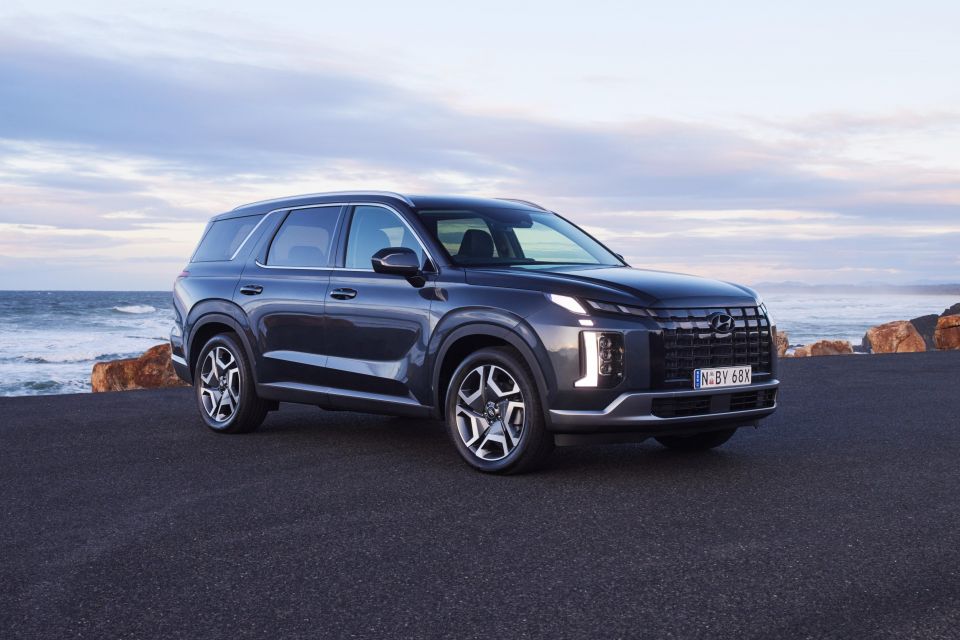
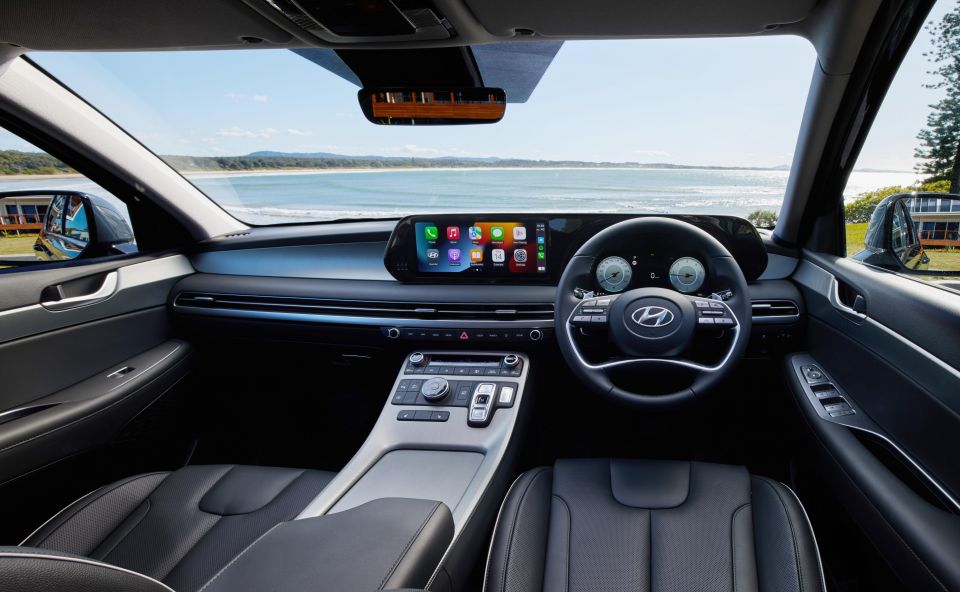


Palisade Elite highlights:
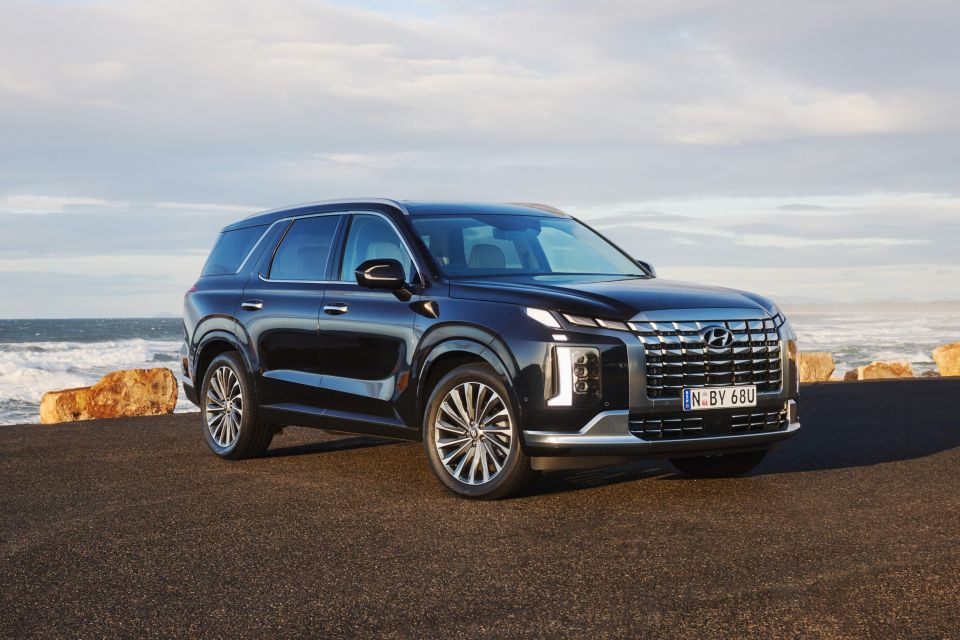

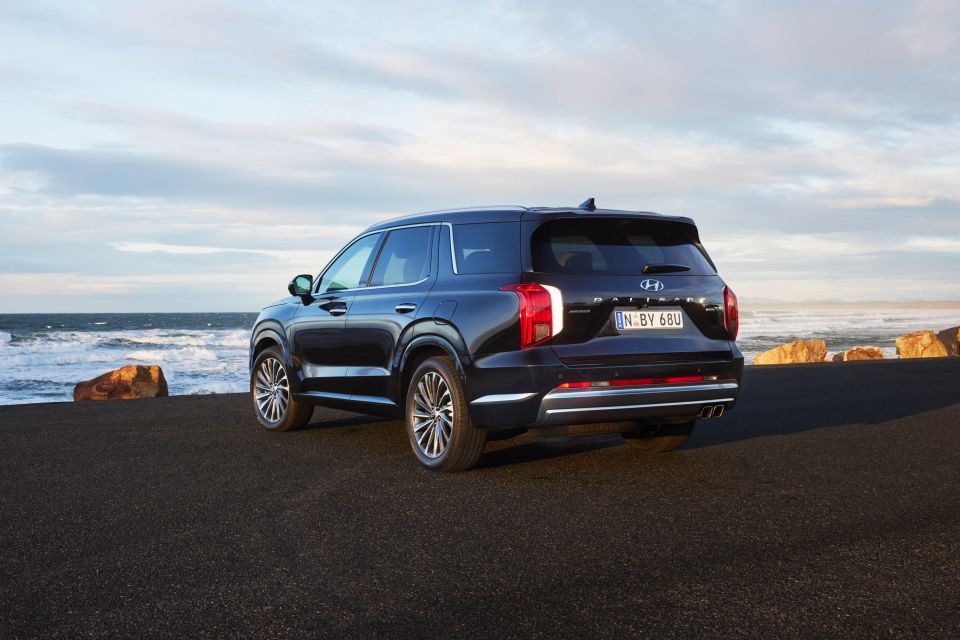

Palisade Highlander adds:
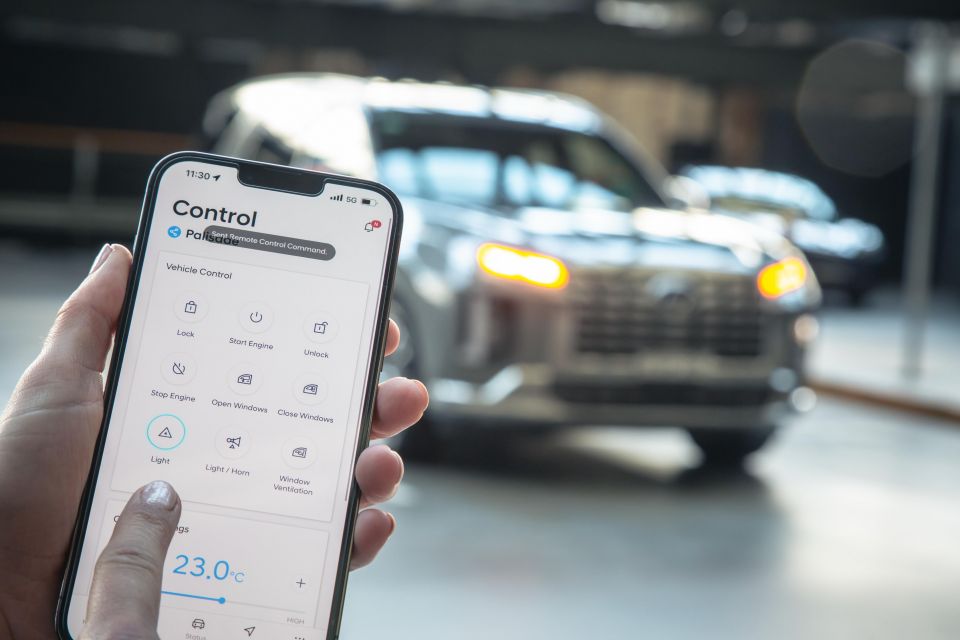
Hyundai Bluelink is essentially the brand’s version of Kia Connect online services, compatible with a smartphone app that allows you find the vehicle’s location, remotely lock or unlock the doors, adjust the climate control settings (including the heated and cooled seats), as well as other functions like remote starting the car.
Other functions include:
Additionally, you can also send a destination to your car or sync your calendar with it, as well as a multitude of other functions.
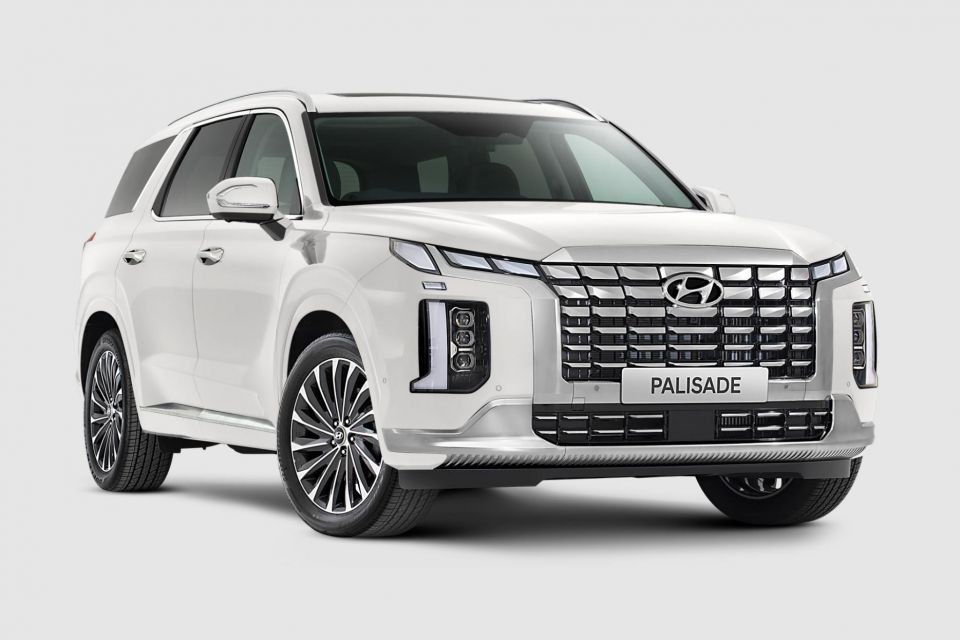
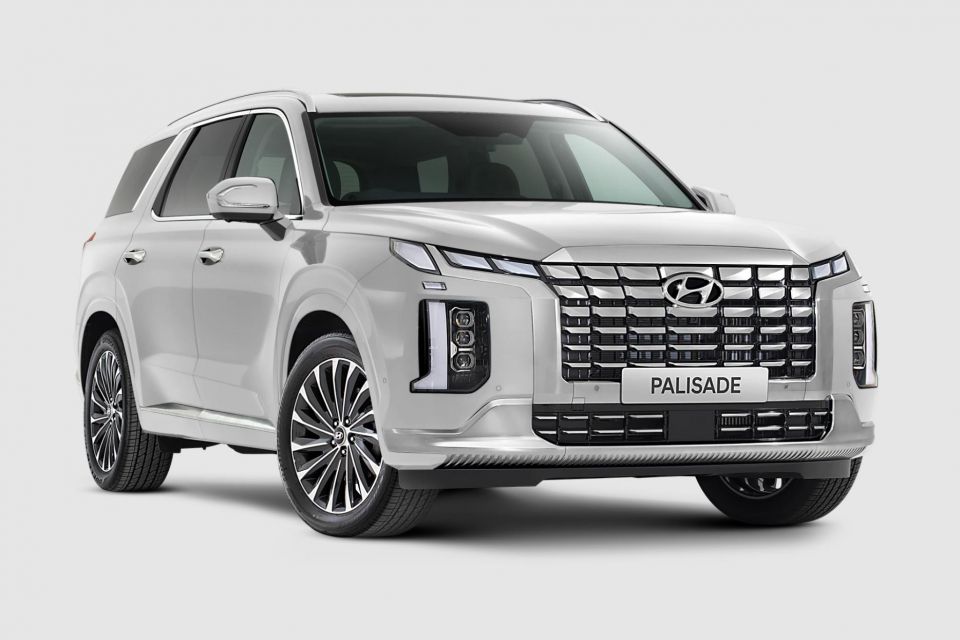
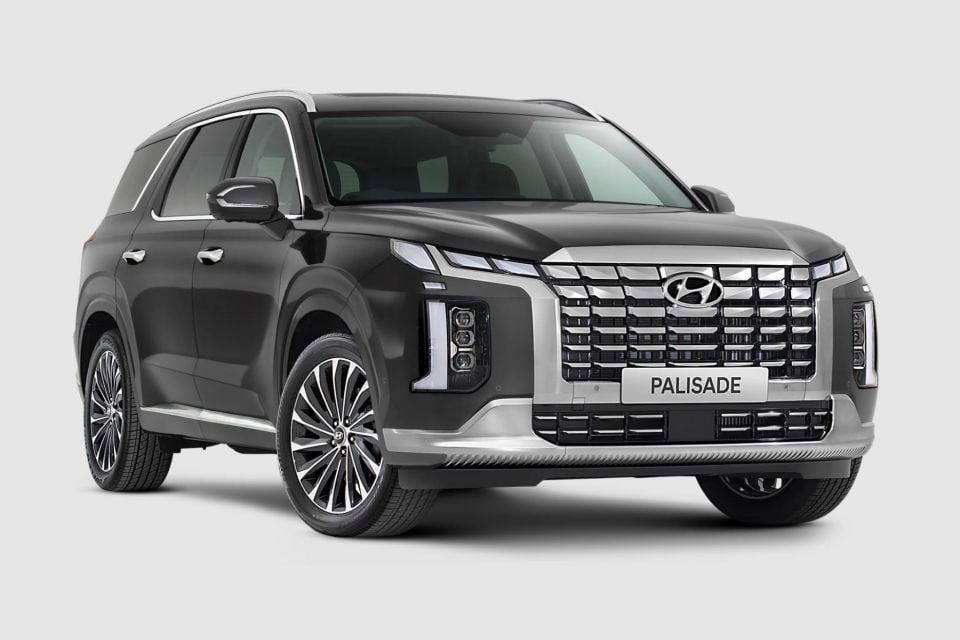
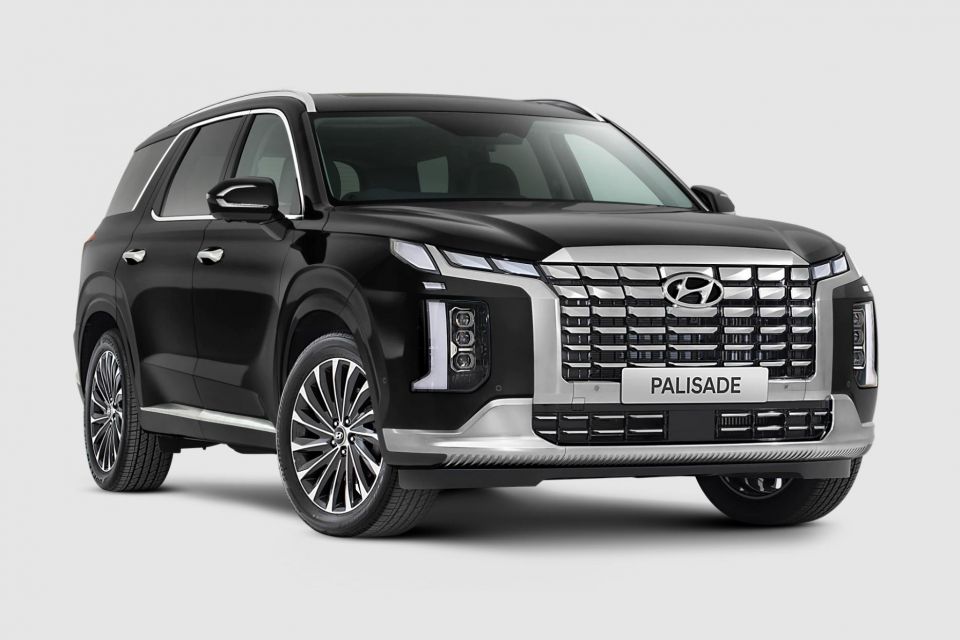
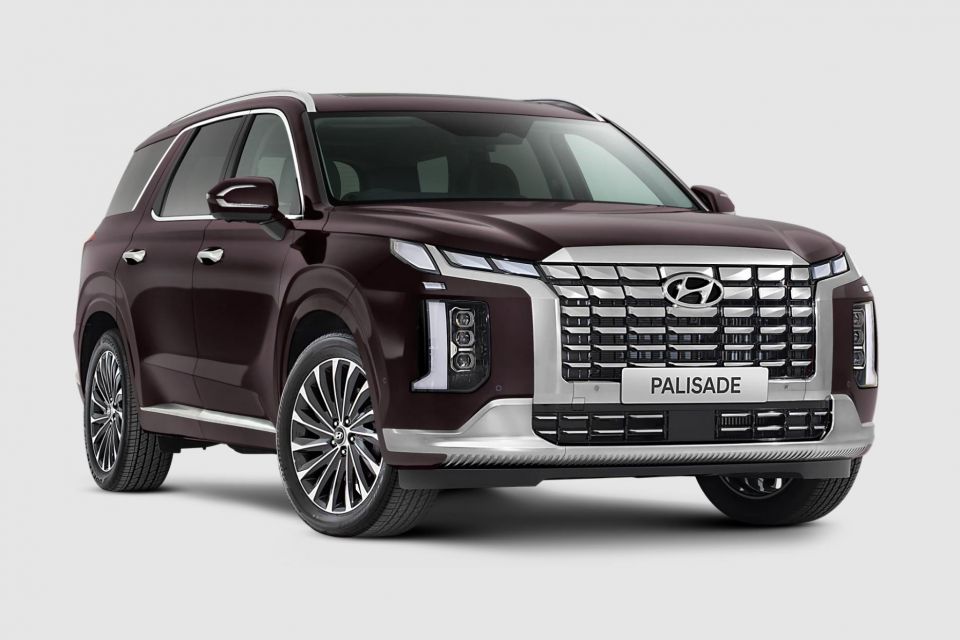
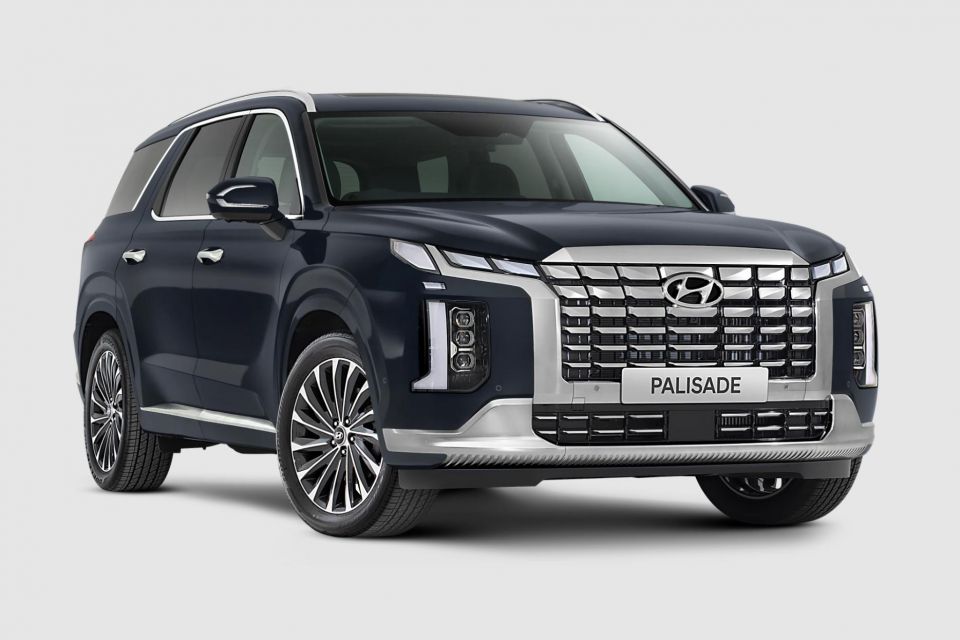
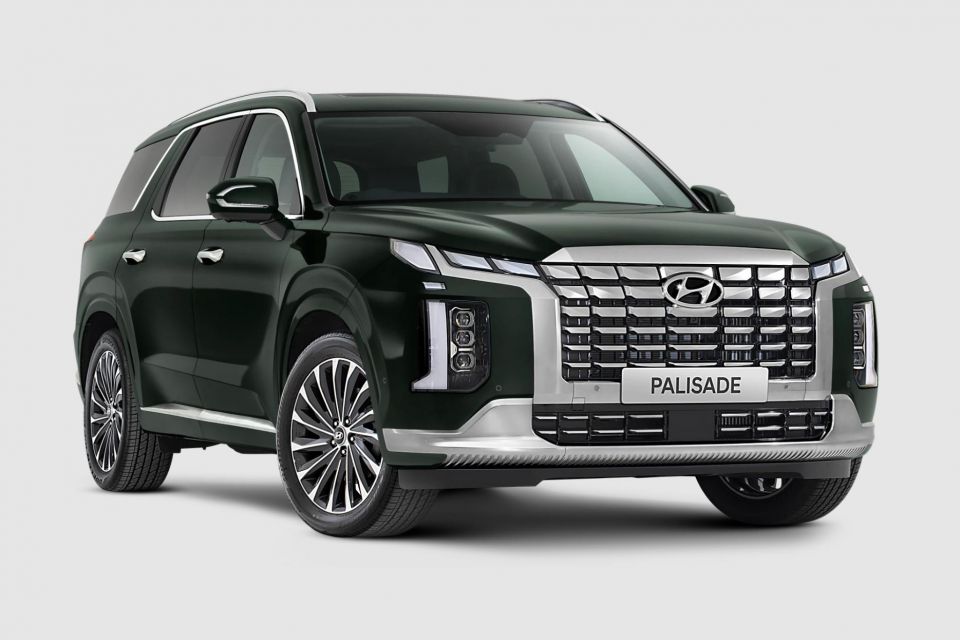
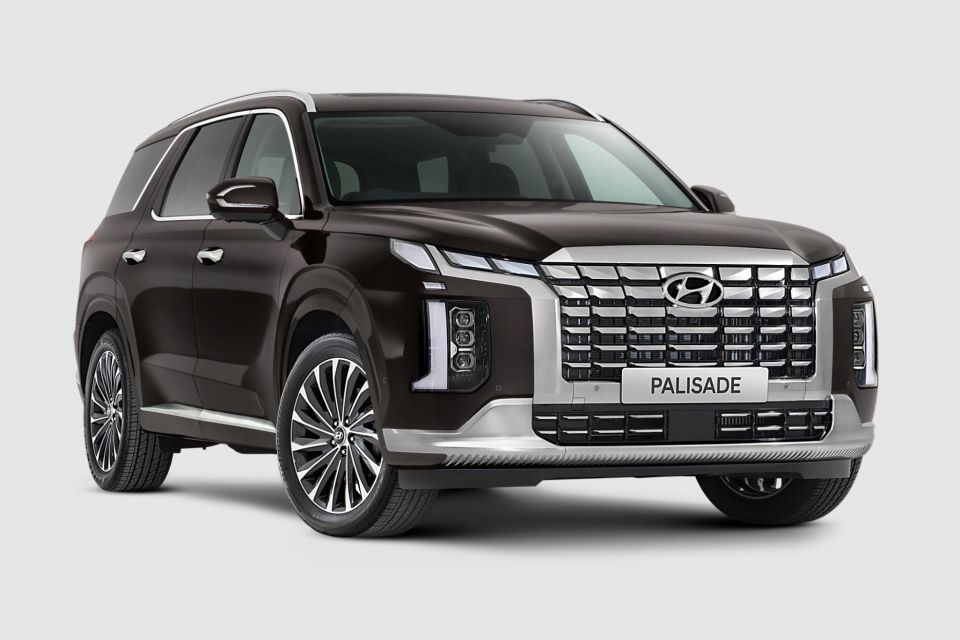
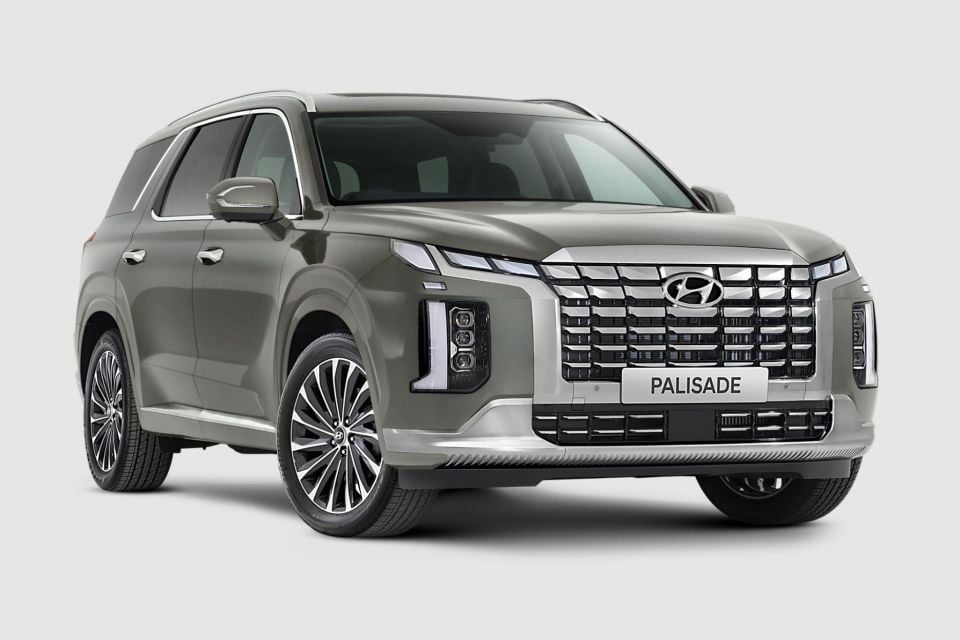
Premium paint is a $695 option.
While all colours are available on Highlanders with the black interior, Hyundai is restricting the availability of certain colours with the other interior themes.
The Dark Khaki interior are available only in Creamy White, Abyss Black or Robust Emerald, while those with the Warm Grey interior can be had only in Graphite Grey, Gaia Brown and Moonlight Blue.
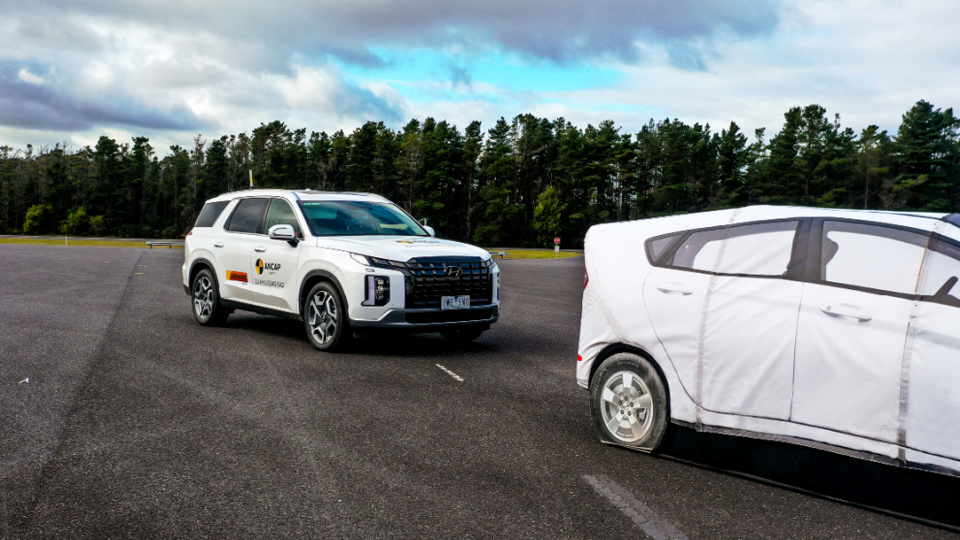
Hyundai added a centre airbag to the 2023 Palisade as well as a host of new and upgraded driver assist features, managing a five-star ANCAP safety rating across the range – following the previous model’s disappointing four-star result.
The new Palisade scored 84 per cent for adult occupant protection, 88 per cent for child occupant protection, 62 per cent for vulnerable road users and 83 per cent for safety assist.
Standard safety features include:
Palisade Highlander adds:
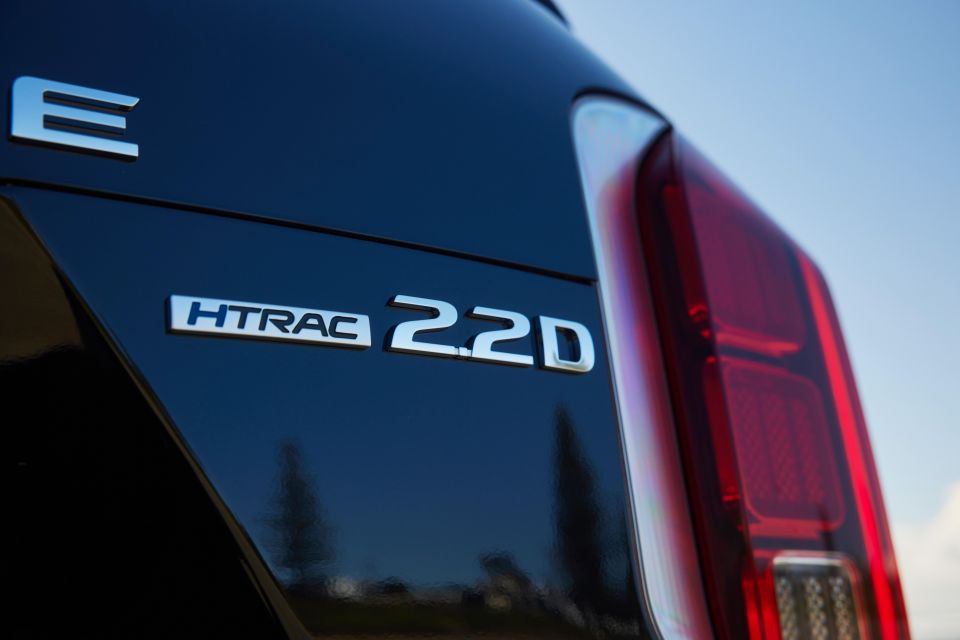
The Palisade is backed by a five-year, unlimited-kilometre warranty – still two years off sister brand Kia.
Servicing is required every 12 months or 15,000km – whichever comes first.
The first five services each cost $399 for the V6 petrol, and $489 for the turbo-diesel.
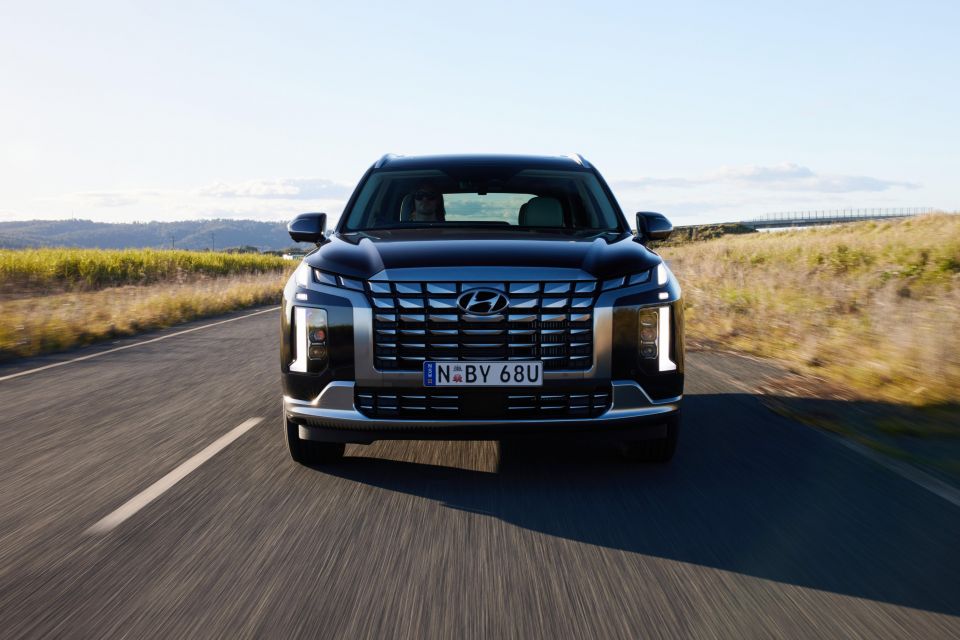
As an affordable luxury SUV with room for up to eight, the 2023 Palisade has hit the ball out of the park – no question.
All the stars are aligned here – from its design, refinement, sublime ride and handling balance, exhaustive inventory of creature comforts to its myriad driver assist systems. All for under 80 grand for the primo Highlander version. Remarkable.
I guess if there was any criticism to level against the Palisade, it would be the lack of a hybrid powertrain to replace the thirsty petrol option, but that’s about it.
Click the images for the full gallery
Where expert car reviews meet expert car buying – CarExpert gives you trusted advice, personalised service and real savings on your next new car.
Anthony Crawford is a CarExpert co-founder and senior presenter with 20+years in automotive journalism and content creation.


Josh Nevett
2 Days Ago


CarExpert.com.au
3 Days Ago


Damion Smy
5 Days Ago


Derek Fung
5 Days Ago


Ben Zachariah
8 Days Ago
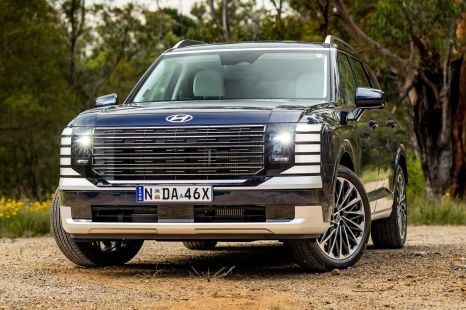

Matt Campbell
11 Days Ago